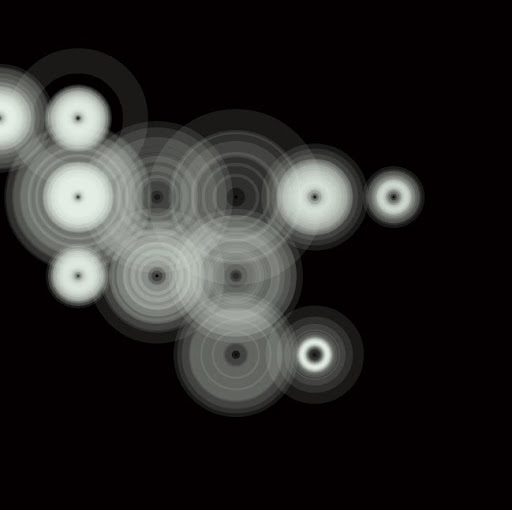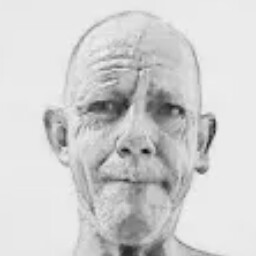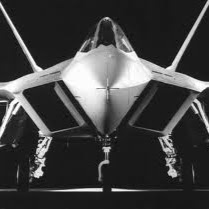James Lawrence Ott
age ~48
from Parker, CO
- Also known as:
-
- James L Ott
- James Anthony Ott
- Jas Ott
- Lori J Ott
- James L Oh
- Jim Ott
- Jimmy Ott
- James Lott
- Ott Jas
- Phone and address:
- 16433 Roan Pl, Parker, CO 80134
James Ott Phones & Addresses
- 16433 Roan Pl, Parker, CO 80134
- Aurora, CO
- Granville, OH
- Englewood, CO
- Chagrin Falls, OH
- Saint Louis, MO
- Auburn Twp, OH
- Oxford, OH
Work
-
Company:6202 cycling
-
Address:4833 Front St Ste B, Castle Rock, CO 80104
-
Phones:(303)7996384
-
Position:Manager
-
Industries:Business Services
Us Patents
-
Method For Detecting The Metal Type Of A Buried Metal Target
view source -
US Patent:6452396, Sep 17, 2002
-
Filed:Sep 6, 2001
-
Appl. No.:09/947961
-
Inventors:Ellen Ott - Akron OH 44333
James H. Ott - Akron OH 44333 -
International Classification:G01V 311
-
US Classification:324327, 324239, 324329
-
Abstract:A hand tool has a handgrip attached to a ground-piercing probe, which is manually insertable in the soil. The probe has a chamber in which at least one inductor is positioned and connected to metal detection circuitry. The preferred circuitry has a pulse generator applying current pulses to an inductor for inducing eddy currents in a buried target object. After the pulse terminates, the decaying coil voltage is sampled at different times to detect both the presence and range of the object, as well as the type of metal in the object. An asymmetric magnetic field pattern about the probe is aligned with a direction pointing indicium on the handgrip and provides directional sensitivity. The coil voltage samples are applied to signaling circuitry, which provides an audible signal which is a series of bursts of an audio tone. The pitch of the audio tone signals the presence, range and bearing of the buried metal object, while the pulse rate of the bursts signals the metal type.
-
Circuit For Detecting The Metal Type Of A Metal Target Object
view source -
US Patent:6456079, Sep 24, 2002
-
Filed:Sep 6, 2001
-
Appl. No.:09/947816
-
Inventors:Ellen Ott - Akron OH 44333
James H. Ott - Akron OH 44333 -
International Classification:G01V 311
-
US Classification:324327, 324239, 324329
-
Abstract:A hand tool has a handgrip attached to a ground-piercing probe, which is manually insertable in the soil. The probe has a chamber in which at least one inductor is positioned and connected to metal detection circuitry. The preferred circuitry has a pulse generator applying current pulses to an inductor for inducing eddy currents in a buried target object. After the pulse terminates, the decaying coil voltage is sampled at different times to detect both the presence and range of the object, as well as the type of metal in the object. An asymmetric magnetic field pattern about the probe is aligned with a direction pointing indicium on the handgrip and provides directional sensitivity. The coil voltage samples are applied to signaling circuitry, which provides an audible signal which is a series of bursts of an audio tone. The pitch of the audio tone signals the presence, range and bearing of the buried metal object, while the pulse rate of the bursts signals the metal type.
-
Method Of Refrigeration Case Control
view source -
US Patent:55333478, Jul 9, 1996
-
Filed:Mar 1, 1995
-
Appl. No.:8/396698
-
Inventors:James H. Ott - Akron OH
Mark E. Anglin - Wadsworth OH
James P. Henderson - Tallmadge OH -
Assignee:Novar Electronics Corporation - Barberton OH
-
International Classification:F25B 4100
-
US Classification:62115
-
Abstract:A method of controlling a refrigeration case of a refrigeration system including the steps of locating an expansion valve of a refrigeration case, moving the expansion valve of the refrigeration case out of a predetermined position, sampling temperature readings from an evaporator coil of a refrigeration case, calculating an adaptive proportional-integral-differential (PID) of the temperature of the evaporator coil for the refrigeration case, and moving the expansion valve to a second position closer to the predetermined position based on the calculated proportional-integral-differential until the temperature of the evaporator coil for the refrigeration case is within a predetermined temperature range.
-
Individual Identification Apparatus And Method Using Frequency Response
view source -
US Patent:RE290084, Oct 19, 1976
-
Filed:Aug 4, 1975
-
Appl. No.:5/601595
-
Inventors:James H. Ott - Akron OH
-
Assignee:Novar Electronics Corporation - Barberton OH
-
International Classification:G06F 100
-
US Classification:3401725
-
Abstract:An electronic apparatus and method suitable for automatic machine interrogation of individuals for identifying persons such as those seeking admittance to secure areas or seeking an extension of credit. Acoustical wave energy is applied by an oscillator and transducer to the person's body, such as one end of an arm. Another transducer contacts another body part, such as the other end of the arm, to receive the body-transmitted energy. The frequency response characteristics of the body part are then detected by suitable correlation means to determine the amplitude and phase transfer functions. Comparison of a previously known transfer function of a person with a subsequently measured transfer function permits a machine decision whether the functions represent the same person.
-
Enclosure System For Sound Generators
view source -
US Patent:40040941, Jan 18, 1977
-
Filed:Mar 16, 1976
-
Appl. No.:5/667351
-
Inventors:James H. Ott - Akron OH
-
Assignee:Novar Electronics Corporation - Barberton OH
-
International Classification:H04R 102
-
US Classification:179 1E
-
Abstract:A device for use in an enclosure associated with an audio speaker or other sound producing device and which permits relatively large volume changes within the enclosure as a result of relatively small pressure changes so that relatively small enclosures can be as effective as enclosures of larger volume. The device reduces the energy required from the speaker to change the volume of the interior of the enclosure. The device has a displaceable walled container having an expansible and contractible volume containing a composition of matter at gas phase/liquid phase equilibrium at its boiling point under atmospheric or other ambient pressure. The composition of matter preferably selected is one having the characteristic that relatively large volumes undergo a phase change for relatively small energies. The composition is heated to its boiling point. The heater is actuated by a volume responsive switch to maintain the container within a selected range of volume.
-
Air Flow Sensor And Detecting Method
view source -
US Patent:52129837, May 25, 1993
-
Filed:Mar 18, 1991
-
Appl. No.:7/671090
-
Inventors:James H. Ott - Akron OH
Mark E. Anglin - Wadsworth OH -
Assignee:Novar Electronics Corporation - Barberton OH
-
International Classification:G01F 168
-
US Classification:7320415
-
Abstract:A pair of thermistors are mounted in a tube which diverts a minor portion of the air flowing through a duct of an HVAC system. One thermistor is heated by a feedback control system to maintain a substantially constant temperature differential between the thermistors. A signal representing the flow velocity is detected by detecting the power which is applied to the heating body to maintain the constant differential. That power represents the thermo power being carried away from the heated body. The temperature of the unheated thermistor is also detected. The signals are converted to digital form and applied to a computer for computing the flow rate in the ducts.
-
Traveling Wave Interferometry Particularly For Solar Power Satellites
view source -
US Patent:43684696, Jan 11, 1983
-
Filed:Sep 17, 1979
-
Appl. No.:6/075943
-
Inventors:James H. Ott - Akron OH
James S. Rice - Akron OH -
Assignee:Novar Electronics Corporation - Barberton OH
-
International Classification:H04B 700
-
US Classification:343100ST
-
Abstract:A method and apparatus for use in scientific measurement analysis and control. Travelling interference fringes are generated by radiating at least two different periodic waves at two different frequencies, one from each of two different radiators. The waves are received, mixed and filtered to detect at least one beat signal from these waves which represents the travelling interference fringe. The phase of that beat signal is detected relative to a reference signal of the same frequency as the beat signal. The radiated waves may be received at a second antenna and the phase of the beat of the waves at the first antenna is compared to the phase of the beat as observed at the second antenna. A third wave may be radiated from the first antenna to provide a reference signal which is the beat generated by the third wave and the other wave from the same radiator.
-
Individual Identification And Diagnosis Using Wave Polarization
view source -
US Patent:40489868, Sep 20, 1977
-
Filed:Aug 5, 1976
-
Appl. No.:5/712038
-
Inventors:James H. Ott - Akron OH
-
Assignee:Novar Electronics Corporation - Barberton OH
-
International Classification:A61B 1000
-
US Classification:128 2R
-
Abstract:An apparatus for use in the medical diagnosis of human and other bodies and also for use in the automatic machine interrogation of individuals for identifying persons such as those seeking credit or admittance to a security area. Oscillatory wave energy, preferably a sonic signal, is applied with a selected polarization to a first part of a body. The polarization of the wave energy transmitted through a portion of the body is detected at a second part of the body. Data representing the shift in polarization is stored for subsequent comparison to a polarization shift which is subsequently measured by the same steps. Comparison of the data representing the two polarization shifts can be used for quantitative and qualitative medical diagnosis as well as for an automatic machine decision whether the polarization shifts are sufficiently similar that they were derived from the same individual. The use of multiple frequencies permits the derivation of a polarization shift characteristic over a range of frequencies. Apparatus is disclosed comprising a wave generating transducer and a plurality of receiving transducers mounted in side-by-side arcuate arrangement for at least partially surrounding the second body part.
Name / Title
Company / Classification
Phones & Addresses
Manager
6202 Cycling
Business Services
Business Services
4833 Front St Ste B, Castle Rock, CO 80104
Vp General Counsel And Secretary
Biomedical Systems Corporation
Medical, Dental, and Hospital Equipment and S...
Medical, Dental, and Hospital Equipment and S...
77 Progress Pkwy, Saint Louis, MO 63146
Incorporator
CITIZENS NON-PROFIT HOUSING DEVELOPMENT OF MORTON, INC
Incorporator
EAST RANKIN TRANSPORTATION, INC
President
EMIX CORPORATION
OTT TECHNOLOGIES LLC
WELLINGTON MORTGAGE LENDERS, INC
President, Director
Novar Corporation
24 Brown St, Barb, OH 44203
Isbn (Books And Publications)

Airline Odyssey: The Airline Industry's Turbulent Flight into the Future
view sourceAuthor
James Ott
ISBN #
0070480303

Airline Odyssey: The Airline Industry's Turbulent Flight into the Future
view sourceAuthor
James Ott
ISBN #
0735100306


Airline Odyssey: The Airline Industry's Turbulent Flight into the Future
view sourceAuthor
James D. Ott
ISBN #
0070480303
License Records
James L. Ott
License #:
2710034804
Category:
Tradesman
James P Ott
License #:
0225163459 - Expired
Category:
Real Estate Individual
Issued Date:
Apr 20, 1989
Expiration Date:
Apr 30, 1995
Type:
Salesperson License
James Ott
License #:
P08499 - Expired
Category:
Emergency medical services
Issued Date:
Aug 2, 1996
Expiration Date:
Feb 28, 1998
Resumes

Security Test Specialist At Sli Global Solutions
view sourceLocation:
Greater Denver Area
Industry:
Information Technology and Services

Teacher
view sourceLocation:
Denver, CO
Industry:
Education Management
Work:
Lincoln Public Schools
Teacher
Teacher

Parts Shipping And Receiving
view sourceLocation:
Denver, CO
Industry:
Automotive
Work:
Autonation Subaru West
Parts Shipping and Receiving
Parts Shipping and Receiving

Solution Architect
view sourceLocation:
Denver, CO
Industry:
Information Technology And Services
Work:
Hewlett-Packard Ft Collins CO - Fort Collins, Colorado Area since Jan 2002
Solution Architect
Hewlett-Packard Ft Collins CO - Fort Collins, Colorado Area Feb 1999 - Sep 2002
Software Engineer
Hewlett-Packard Ft Collins CO - Fort Collins, Colorado Area Jun 1997 - Feb 1999
Solution Consultant
Hewlett-Packard Ft Collins CO - Fort Collins, Colorado Area Jan 1996 - Jun 1997
Software Design Engineer
Colorado State University - Fort Collins, Colorado Area Jan 1997 - May 1997
Visiting Professor
Solution Architect
Hewlett-Packard Ft Collins CO - Fort Collins, Colorado Area Feb 1999 - Sep 2002
Software Engineer
Hewlett-Packard Ft Collins CO - Fort Collins, Colorado Area Jun 1997 - Feb 1999
Solution Consultant
Hewlett-Packard Ft Collins CO - Fort Collins, Colorado Area Jan 1996 - Jun 1997
Software Design Engineer
Colorado State University - Fort Collins, Colorado Area Jan 1997 - May 1997
Visiting Professor
Education:
Colorado State University 1988 - 1993
Doctor of Philosophy (Ph.D.), Electrical and Electronics Engineering Purdue University 1984 - 1985
Master of Science (M.S.), Electrical and Electronics Engineering Purdue University 1980 - 1984
Bachelor of Science (B.S.), Computer Engineering
Doctor of Philosophy (Ph.D.), Electrical and Electronics Engineering Purdue University 1984 - 1985
Master of Science (M.S.), Electrical and Electronics Engineering Purdue University 1980 - 1984
Bachelor of Science (B.S.), Computer Engineering
Skills:
Pre Sales
Solution Architecture
Telecommunications
Networking
Virtualization
Network Administration
Cloud Computing
Architecture
Hp Openview
Business Service Management
It Management
Crm
Strategy
Leadership
Training
Programming
Computer Hardware
Simulations
Electrical Engineering
Verilog
Vhdl
R&D
Solution Architecture
Telecommunications
Networking
Virtualization
Network Administration
Cloud Computing
Architecture
Hp Openview
Business Service Management
It Management
Crm
Strategy
Leadership
Training
Programming
Computer Hardware
Simulations
Electrical Engineering
Verilog
Vhdl
R&D
Awards:
IBM Fellowship
Colorado Teaching Assistant Fellowship
Awarded for outstanding teaching accomplishments.
IEEE-Colorado State University Outstanding EE Graduate Student
Colorado Teaching Assistant Fellowship
Awarded for outstanding teaching accomplishments.
IEEE-Colorado State University Outstanding EE Graduate Student

James Ott
view source
James Ott
view source
James Ott
view source
James Ott
view source
James Ott
view source
James Ott
view source
James Ott
view source
James Ott
view source
James Ott
view source
James W. Ott
view source
James Ott Jr.
view sourcePlaxo

James Ott
view sourcemaintenance at Qi

James Ott
view sourceWatson, LA
Classmates

James Ott
view sourceSchools:
Grand Haven High School Grand Haven MI 1973-1977
Community:
Forest Jourden

James Ott
view sourceSchools:
South Voc-Tech High School Pittsburgh PA 1957-1961
Community:
Clement Colonnese, Georgiann Bender, Harvey Williams, Autumn Pope

James Ott
view sourceSchools:
Fenton High School Bensenville IL 1953-1957
Community:
Bill Schey, George Slockyj, Richard Kasnick, Donna Forester

James Ott
view sourceSchools:
Karnack High School Karnack TX 1988-1992
Community:
Janice Perry, Howard Mcdaniel, Sarah Hood

James Ott
view sourceSchools:
St. Elizabeth Catholic School Wainfleet Morocco 1978-1979, Fitch Street School Welland Morocco 1979-1980
Community:
Judy Ritchie, Carolyn Gorbet, Allan Garner, Angela Beatty
Flickr
Googleplus

James Ott

James Ott
Tagline:
I love hairy penises

James Ott

James Ott

James Ott

James Ott

James Ott

James Ott
Youtube
Myspace
Get Report for James Lawrence Ott from Parker, CO, age ~48


















